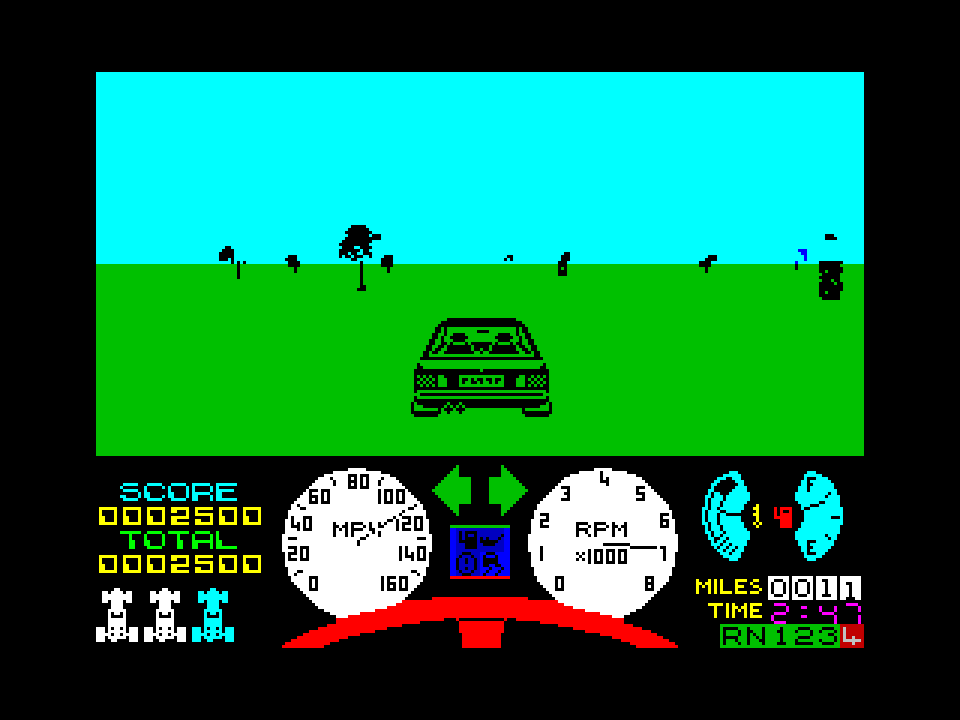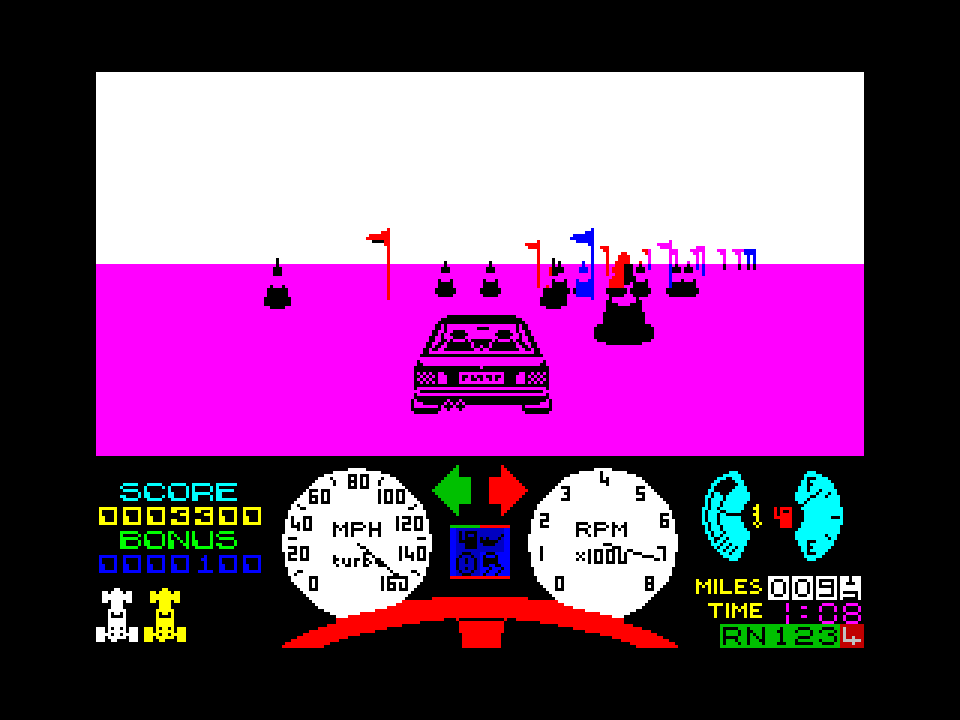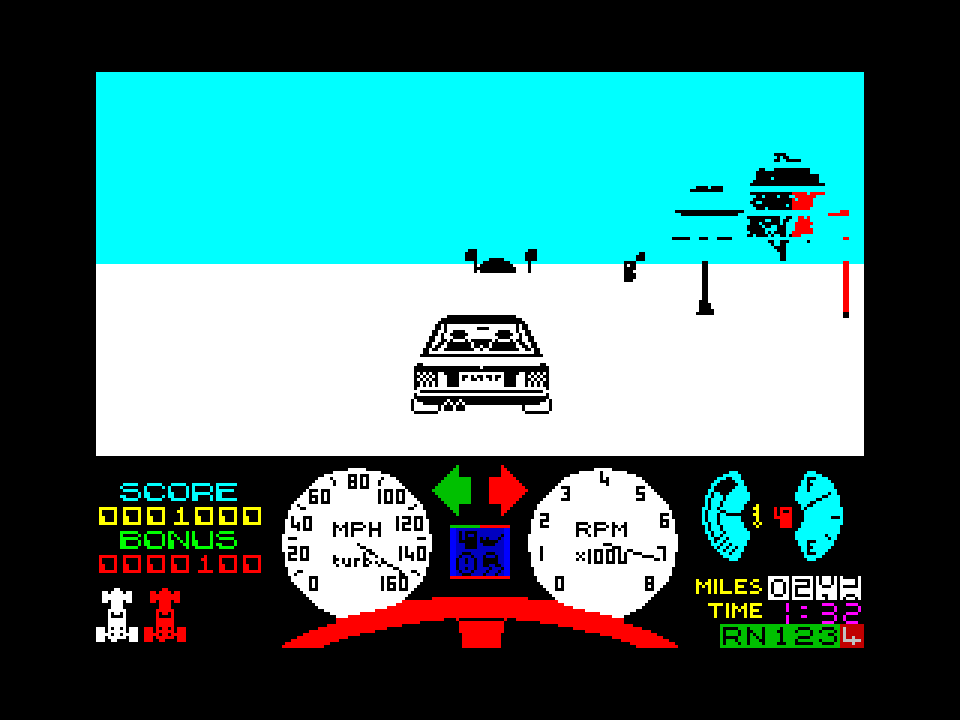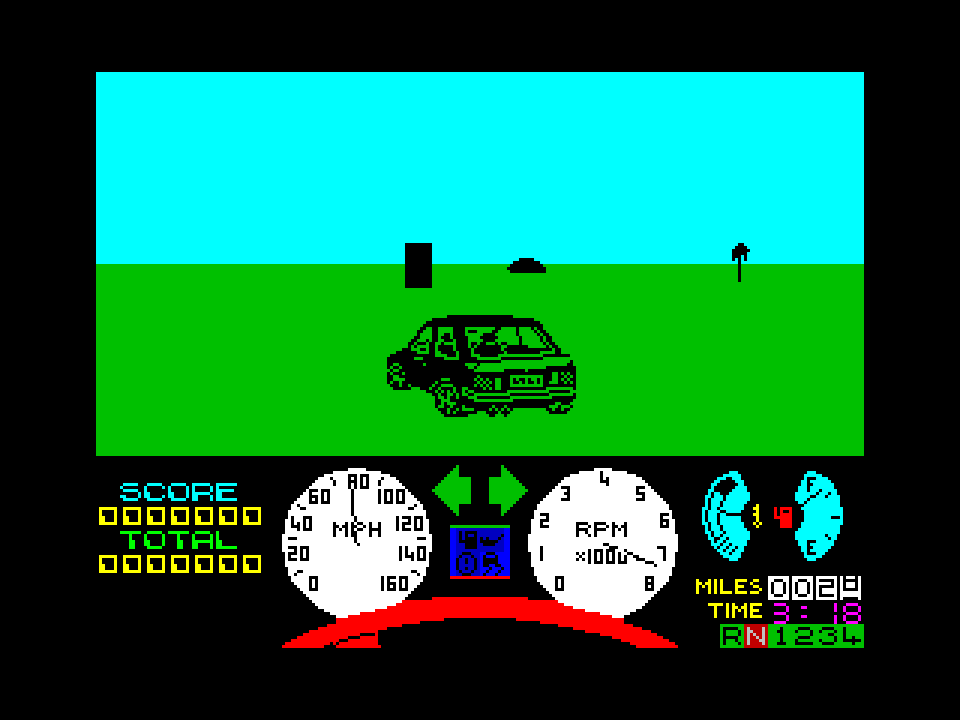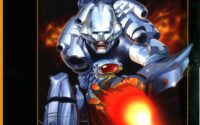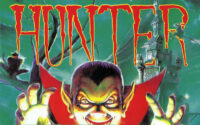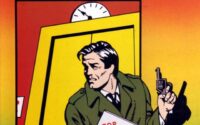Nightmare Rally Review
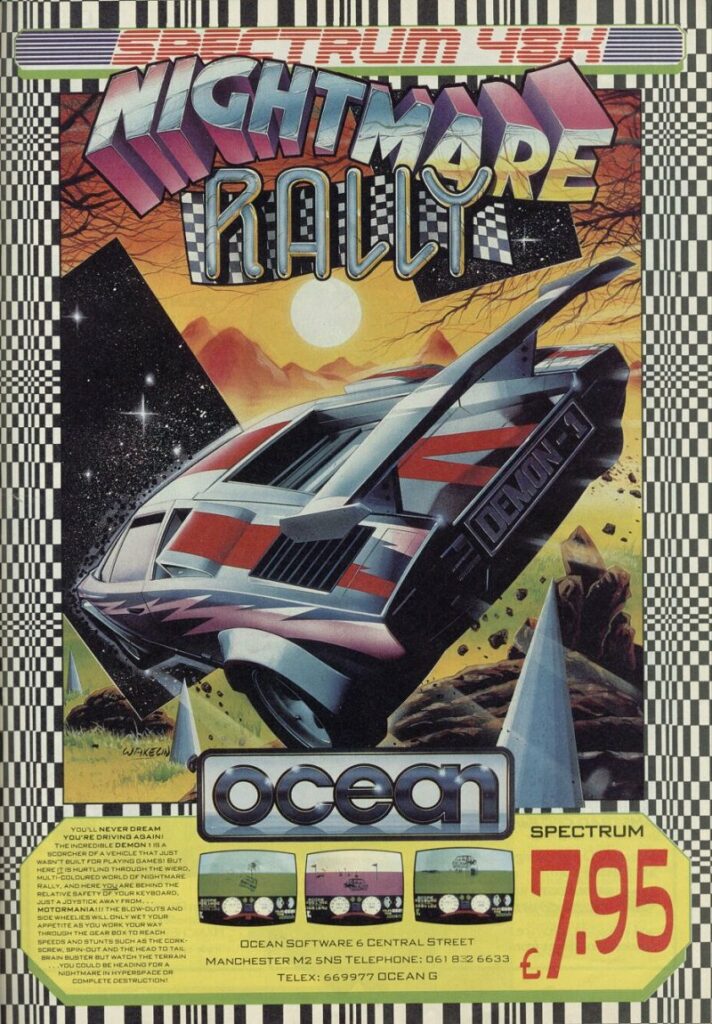
Get behind the wheel for some bad dream-inducing rally in quite a rad racer…! … Wait… No… Wrong game and wrong platform… But this doesn’t mean that the Spectrum can’t at least have some racing that IS pretty rad…!
STORY
Since Nightmare Rally is slightly (Slightly.) closer to a car simulator than what it is to an ordinary arcade racer, I wouldn’t be surprised if this actually is what rally drivers’ nightmares look like – There is a delicate mix of overheating engines and empty gas tanks, to crazy flips and collisions that behave in a very dream-logical way.
But Nightmare Rally also happens to be a solid driving game with plenty of exciting and sweat-pouring slaloming between flags and other natural obstacles.
THE GAME
“The definitive driving game.”
Eighteen stages of more or less crazy driving and closer to 600 miles lie between you and the goal. You’re placed behind the wheel of a car that reportedly is the Ford Escort Mk3 RS1700T. (But it could be a modified Volkswagen Golf “or something”.) The objective is to slam the pedal to the metal and try to beat both the clock and the target score while getting the car from point A to B in exactly one piece. Of course it’s a nightmare, especially when you progress – It’s in the title…!
CONTENT
Nightmare Rally is played in third person view and in semi-open (Using the term very lightly.) off road environments. This means that there are no tracks that you have to stay on, but the trees and rocks kind of outline where you can’t drive. However, you have to drive on the left side of the blue flags and on the right side of the red ones. Failing to do so reduces your car’s overall energy. Likewise if you bump into things that are harder than the car.
On screen, you have the playing area as well as the dashboard. The dashboard consists of pretty much what you would find in a real car. (Except for a “Score”- and “Total” [Score] counter. What the hell is the deal with that?) But you have your Speedometer (in miles) and RPM meter. Engine temperature, fuel level, the distance driven, time remaining, and gear is also displayed. And the on-screen steering wheel moves and everything. The left and right indicators show where the upcoming flags are. Four indicators also warn you if the car is skidding (The brakes don’t work that well on ice.), if the engine is about to fry / over-rev, or, if you need to refuel.
But how do you refuel out in the middle of nowhere when you shouldn’t even stop – At least not for more than a moment? There are gates looking like the Russian letter “P” (П) that you more than often can’t avoid driving through. Passing through these gates either do nothing, or they fill up the tank. (These are marked “Gas”.) The other bigger gates either give you a Turbo Charger (Better acceleration and top speed.), Super Turbo (Turns the car into something supernatural when it comes to both indestructibility and speed.), or they teleport you to (hopefully) some other stage. (Maybe even the same one.) Bonus points and “time increase”-bonus are also in the game. Good scores are given if you jump or barrel roll over hills. And fly as far as possible. (Not that many games in 1986 gave you the opportunity to drive a car a bit like you fly a plane. Sort of.)
Other than that, the tyres can blow if you drive over enough stationary shit on the ground. The cars you have left are shown as icons in the lower left corner of the screen. The right car-icon also displays the current car’s energy level as a color – White means that the car is in top condition while red means that the next hit will wreck it. (This color-coded damage indicator applies to both the tyres as well as the body.)
As for the different levels… There are ordinary tracks on grass, and complete fuckin’ lunatic’s wet dream. (Which are races at 160 MPH in the forest.) But there are also desert (Sand and ice.) levels, night- and mist driving, plus those nightmare levels with huge traffic cones everywhere. Luckily, you get points for running them over. If you happen to hit a tree, you just lose some energy. Driving through creeks too fast puts the most damage to your car. The water can usually be jumped over if you run straight into a small hill right before it.
At the beginning of the game, you get too choose whether you want manual or automatic transmission. Even if you choose automatic gears, you need to step on the gas and slam in the gear to take off. And if you hit something bigger than you, you have to reverse away from it by slamming in the reverse. Before each stage, you get an info-screen with the Target Score, e.g., 30.000 means that you need 30.000 points to qualify for the next stage, length of the stage, brakes, and skid. “Brakes” is a value that shows how effective your stopping distance is, and “Skid” tells you how fast you can go without skidding. (If you turn at higher speeds, it’s basically like aquaplaning.)
Nightmare Rally has a two-player mode, but it’s unsurprisingly of the alternating kind. The game also has a looping “Attract Mode” displaying the “Today’s Scores”-list, a “movie credits”-style text crawl, and some gameplay. This sequence alternates between two stages every “loop” and simply showcases how fast the graphics are, i.e., it doesn’t show collisions or how the car reacts to the environment.
CONTROLS
The “Change Control”-option on the title screen takes you to a so called “Control Editor”. Four Joystick interfaces can be selected: Kempston, Sinclair RHS, Sinclair LHS, or Cursor. The last option is playing with the keys. These are defined by the player. (Up, down, left, right, Fire, and Halt.)
You push up to gas and down to brake. Up + Fire or Down + Fire shift gears. “Halt” is another word for pause, which freezes the game but rotates the screen on the Y-axis. (A nice looking “Demo”-effect.) And if you think it’s easy driving on ice, you could try mastering driving with busted tyres.
GRAPHICS
To make the game somewhat more colorful, the developers changed the color of the ground and sky for some levels that aren’t on either sand, snow, or in pitch darkness.
The car looks really nice and has quite a few frames of animation. And the objects around you scale nicely enough. The red and blue flags are the only stuff that isn’t black. “Thanks” to the old color-clashing artifacts, you see the flags in the distance “through” trees as a block turns either red or blue. And when they overlap, you get purple blocks. This is a minor issue, though. The speed is what’s important here. And the good response from the controls.
The game logo is also amazingly stylish, and the loading screen is a classic. (Even though it shows a Lamborghini Countach about to fly into a stargate.)
SOUND
Faint rattling at different speeds. (That’s the engine.) A couple of beeps and… No, that’s it… You have to bring your own driving music if you desperately need some… I don’t know if a couple of pieces of hectic blip-blop tunes would have made the game better or worse, but I’d think they would have been pretty distracting.
SUMMARY
Okay, so Nightmare Rally isn’t, and didn’t really aim to be, Rad Racer for the Spectrum. But it’s a well-made driving game with decent speeds to match the quality. The stages challenge the player from the very beginning, and none of them feel like the developers imagination ran dry. Each stage has some surprises along the way.
Initially, you might wonder why the hell a race suddenly is interrupted and restarts minus a car, but it’s just that the game deals with the failures of the driver in a very subtle way. The surrealistic touches (For example, with the car flipping and occasionally jumping through Hyperspace.) are very welcome. This whole framing mixed with actual driving mechanics gives the game its unique identity. There’s certainly more than meets the eye here.
Developed by: Giga Games
Published by: Ocean
Version Reviewed: ZX Spectrum 48K
Genre: Racing
Players: 1 (2 – Alternating)
Also Available On: N/A
Released: 1986

